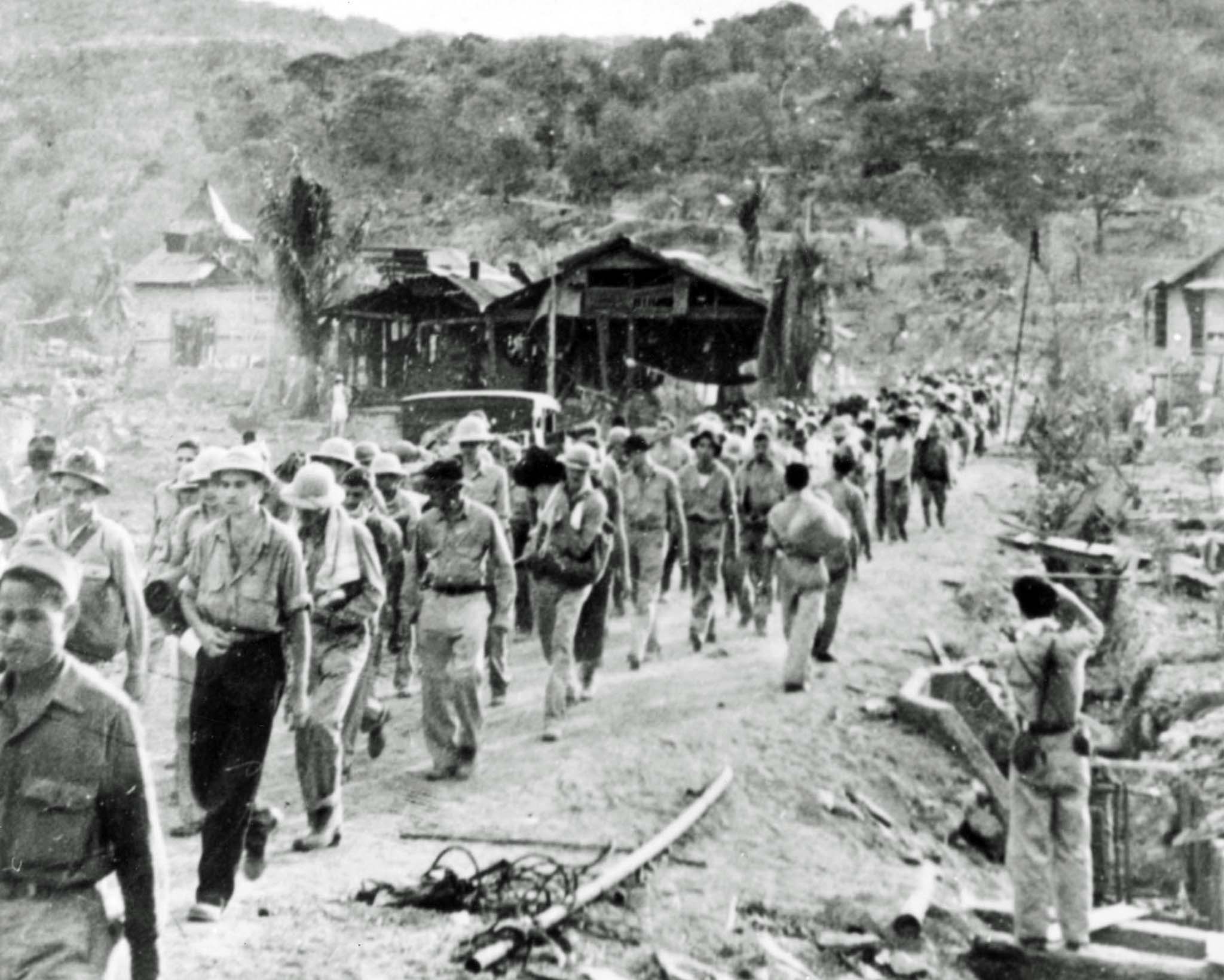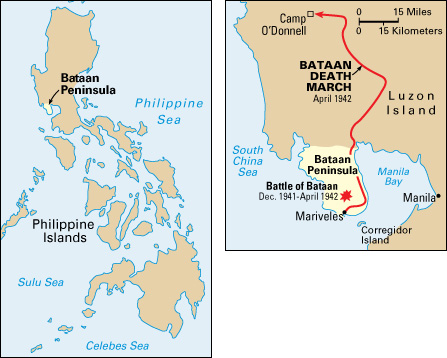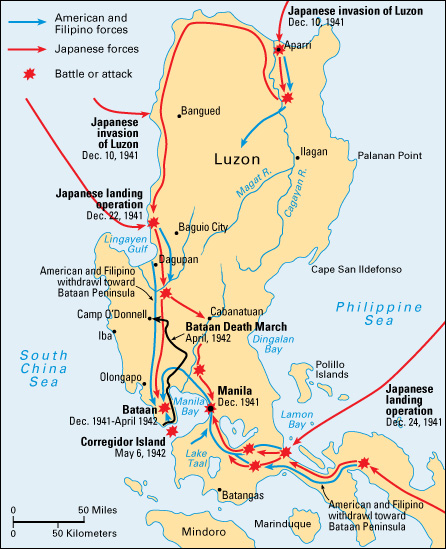Bataan Death March was a march of war prisoners forced by the Japanese during World War II (1939-1945). The march took place in the Philippines , starting from the southern coast of the Bataan Peninsula , in April 1942. Thousands of American and Filipino prisoners of war died on the 65-mile (105-kilometer) march. Causes of death included sickness, starvation, and mistreatment by Japanese soldiers.

On Dec. 7, 1941, the Japanese attacked the American naval base at Pearl Harbor , Hawaii, bringing the United States into World War II. The next day, Japan invaded the Philippines, which at that time was a self-governing commonwealth of the United States. American and Filipino troops defended against the invasion, but they were outnumbered. The defending forces withdrew to the Bataan Peninsula, where they held out for three months against Japanese attack. The exhausted forces soon began to suffer from malnutrition and disease. Eventually, on April 9, 1942, more than 75,000 defenders surrendered to the Japanese and were taken prisoner. The group was the largest U.S. army ever to surrender.

On April 10, the first prisoners began the forced march from Mariveles, on Bataan’s southern coast, to Camp O’Donnell, a prison camp, north of the peninsula. The Japanese mistreated the Allied prisoners as they marched in the tropical heat. The prisoners, many of whom were already ill, received little food or water. Japanese soldiers beat the prisoners and killed some of them randomly. The Japanese also beat or killed civilians who tried to help the prisoners along the way. Prisoners too weak to keep up with the march were executed. During the weeklong march, thousands of prisoners died. Thousands more reached the camp in such a weak and sick condition that they also soon died.

Japanese Lieutenant-General Masaharu Homma commanded the troops responsible for the Bataan Death March. After the war, a U.S. military tribunal convicted him of war crimes. Homma was executed on April 3, 1946.
